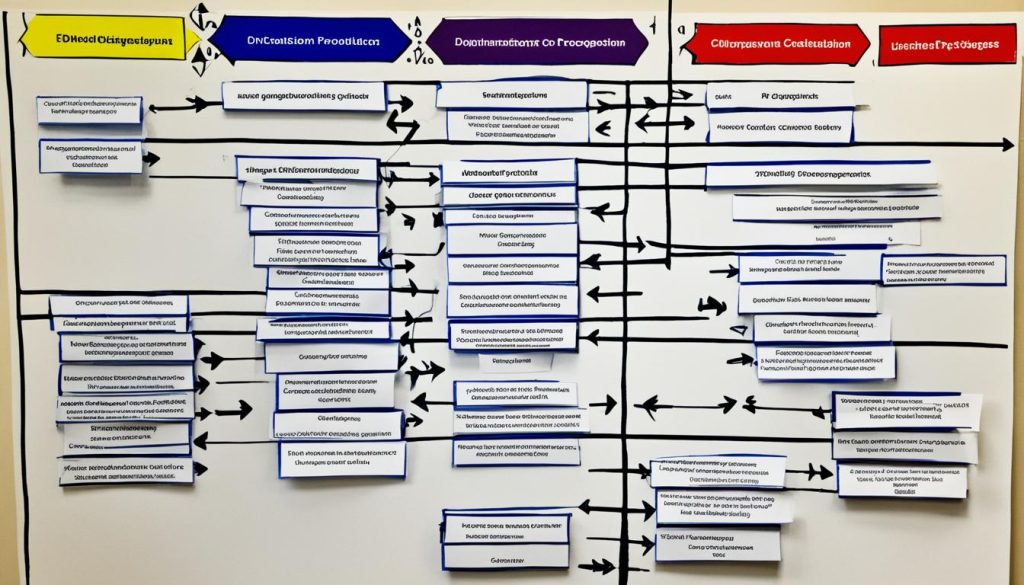The disciplinary procedure is a crucial aspect of any organisation’s operations, providing a framework for addressing employee conduct and performance issues. It outlines the steps that employers must take when dealing with disciplinary matters, ensuring fairness and consistency in decision-making. From minor infractions to serious misconduct, having a well-defined disciplinary procedure in place can help maintain a productive work environment and protect the interests of both employees and employers.
In this comprehensive guide, we will delve into the key components of a disciplinary procedure, including the importance of having a clear policy, the steps involved in the disciplinary process, and best practices for handling disciplinary meetings. Whether you’re an HR professional, a manager, or a business owner, understanding the disciplinary procedure is essential for maintaining a harmonious workplace and ensuring compliance with employment law.
What is the Disciplinary Procedure?
A disciplinary procedure is an essential process for employers to address employee misconduct in a fair and legal manner. It is designed to maintain high standards of behavior and performance while offering opportunities for improvement. The stages of a disciplinary procedure typically include a series of graduated steps, starting with verbal warnings and progressing to written warnings, final written warnings, and ultimately, dismissal.
Common reasons for disciplinary action include poor timekeeping, unauthorized absence, and misconduct related to email, internet, or social media misuse. It is crucial for employers to have a clear disciplinary procedure in place to ensure compliance with legal frameworks and to avoid potential claims of unfair dismissal.
Key Considerations for a Fair Disciplinary Procedure
In order to conduct a fair disciplinary procedure, employers must take into account several key considerations. These considerations ensure that the disciplinary process is conducted in a legal and ethical manner, while providing employees with an opportunity to present their side of the story and respond to allegations. The following points highlight the essential aspects of a fair disciplinary procedure:
Assessing the Need for Formal Proceedings
Before initiating formal disciplinary action, employers should assess whether the issue can be resolved through informal channels. Informal resolution methods, such as coaching or counseling, may be more appropriate for minor misconduct or performance issues. This approach can help maintain positive working relationships and prevent unnecessary escalations.
Conducting a Thorough Investigation
If formal disciplinary action is necessary, employers should conduct a thorough investigation. This involves gathering relevant evidence, interviewing witnesses, and documenting findings objectively. A fair investigation is crucial for determining the fairness and validity of any subsequent disciplinary action.
Inviting the Employee to a Disciplinary Meeting
Once the investigation is complete, the employee should be invited to a disciplinary meeting. In this meeting, the allegations and evidence against the employee are presented, allowing them to respond and share their perspective. It is important that this meeting is conducted in a private and respectful manner to ensure fairness.
Making a Fair and Reasonable Decision
After considering the evidence presented and any mitigating circumstances, the employer must make a fair and reasonable decision on disciplinary action. This decision should be based on established company policies and past precedents, ensuring consistency in the treatment of similar cases. The decision should also take into account the severity of the misconduct and the employee’s past record.
Informing the Employee of the Decision
Once a decision has been made, it must be communicated to the employee in writing. The written notification should clearly outline the decision, the disciplinary action imposed (if any), and the reasons for the decision. It should also inform the employee of their right to appeal the decision if they believe it is unfair.
| Key Considerations for a Fair Disciplinary Procedure |
|---|
| Assessing the Need for Formal Proceedings |
| Conducting a Thorough Investigation |
| Inviting the Employee to a Disciplinary Meeting |
| Making a Fair and Reasonable Decision |
| Informing the Employee of the Decision |
Steps in the Disciplinary Process
The disciplinary process involves a structured framework for addressing employee misconduct. The steps may vary depending on the severity of the misconduct and other specific circumstances of the case. These steps include:
- Assessing the need for formal proceedings
- Conducting an investigation
- Setting up a disciplinary meeting
- Conducting the meeting to discuss allegations and evidence
- Making a decision on disciplinary action
- Informing the employee of the outcome
Employers should have a clear disciplinary procedure template in place to ensure consistency and compliance with legal requirements. One widely used template is the ACAS disciplinary procedure flow chart, provided by the Advisory, Conciliation and Arbitration Service (ACAS).

| Assessing the need for formal proceedings | Determine if the misconduct warrants formal disciplinary action or if it can be resolved through informal means. |
|---|---|
| Conducting an investigation | Gather evidence, interview witnesses, and assess the fairness of subsequent disciplinary action. |
| Setting up a disciplinary meeting | Invite the employee to a meeting to discuss the allegations and provide an opportunity for the employee to present their side of the story. |
| Conducting the meeting to discuss allegations and evidence | Hold a meeting where the employer presents the evidence and gives the employee a chance to respond. |
| Making a decision on disciplinary action | Based on the evidence and the employee’s response, make a fair and reasonable decision on the appropriate disciplinary action. |
| Informing the employee of the outcome | Communicate the disciplinary action, including any sanctions or warnings, in writing to the employee. |
Common Reasons for Disciplinary Action
In the workplace, disciplinary action may be initiated for various reasons, ranging from minor instances of misconduct to more severe offenses classified as gross misconduct. Common examples of minor misconduct include poor timekeeping and unauthorised absence. On the other hand, gross misconduct refers to serious breaches of conduct, such as theft, fraud, harassment, violence, or substantial violations of health and safety regulations.
The severity of the misconduct will determine the appropriate level of disciplinary action, which can range from verbal warnings to written warnings, final written warnings, or even dismissal. It is imperative for employers to have a clear disciplinary policy in place that outlines the specific behaviors that may lead to disciplinary action. This policy should also encompass the steps involved in the disciplinary process, ensuring consistency and fairness in addressing employee misconduct.
Examples of Common Disciplinary Actions
A disciplinary procedure example can shed light on the range of actions that can be taken against employees depending on the severity of the misconduct.
| Level of Misconduct | Disciplinary Actions |
|---|---|
| Minor Misconduct |
|
| Gross Misconduct |
|
Unfair disciplinary action at work should be avoided at all costs, as it can lead to employee dissatisfaction, legal consequences, and reputational damage for the organization. By following a clear disciplinary procedure that is outlined in the organization’s disciplinary policy, employers can ensure that actions taken are fair and in compliance with relevant laws and regulations.
The disciplinary process steps may differ depending on the circumstances, but having a well-defined process in place helps maintain transparency and accountability when addressing employee misconduct and promotes a positive work culture.

Benefits of a Clear Disciplinary Procedure
Implementing a clear disciplinary procedure can provide significant benefits for both employers and employees. This well-defined process ensures a structured approach to addressing employee misconduct, promoting consistency and fairness in dealing with disciplinary actions.
For employers, a clear disciplinary procedure helps protect the company from potential legal claims. By demonstrating that disciplinary decisions are made in accordance with established policies, employers can minimize the risk of accusations of unfair treatment or wrongful dismissal.
Employees also benefit from a clear disciplinary procedure. It provides transparency and clarity regarding the expectations and potential consequences of misconduct. Employees have a fair opportunity to present their side of the story during the disciplinary hearing process and can appeal decisions they deem unfair.
A robust disciplinary procedure contributes to a positive work environment, promoting high standards of conduct and performance throughout the workplace.

| For Employers | For Employees |
|---|---|
| Structured approach to addressing misconduct | Transparency and clarity regarding expectations |
| Consistency and fairness in disciplinary actions | Fair opportunity to present their side of the story |
| Protection from potential legal claims | Ability to appeal decisions deemed unfair |
| Promotes compliance with legal frameworks | Promotes a positive work environment |
A clear disciplinary procedure is an essential component of an effective workplace disciplinary process. It ensures that employers and employees alike understand the guidelines and expectations, creating a fair and accountable work culture.
Best Practices for Implementing Disciplinary Procedures
When implementing disciplinary procedures, employers should follow a set of best practices to ensure fairness, consistency, and compliance. By adhering to these practices, employers can effectively address employee misconduct and maintain a positive work environment.
Thorough and Impartial Investigation
At the core of any disciplinary procedure is a thorough and impartial investigation. Employers should conduct a comprehensive examination of alleged misconduct, gathering all relevant evidence and speaking to witnesses. This investigation should be carried out in a fair and unbiased manner, providing both the employer and the employee with the opportunity to present their case and provide supporting evidence.
Private and Respectful Disciplinary Meetings
Disciplinary meetings should be conducted in a private and respectful setting to ensure confidentiality and promote open communication. During these meetings, employees should be given the chance to respond to the allegations and present their side of the story. Employers should actively listen and consider the employee’s perspective, fostering an environment of mutual respect and understanding.
Fair and Consistent Disciplinary Actions
All disciplinary actions taken should be fair, consistent, and proportionate to the misconduct committed. Employers should ensure that similar instances of misconduct are met with similar disciplinary measures. This consistency in disciplinary actions helps maintain fairness and avoids any perception of bias or discrimination.
Documentation of Disciplinary Process
It is essential to meticulously document the entire disciplinary process. This includes keeping written records of verbal warnings, written warnings, final written warnings, and any other disciplinary actions taken. These records serve as a reference for future use, ensuring transparency and accountability.

Regular Training on the Disciplinary Procedure
Both managers and employees should receive regular training on the disciplinary procedure to ensure understanding and compliance. This training should cover the company’s disciplinary action policy, the investigation process, and the rights and responsibilities of both parties involved. By providing ongoing training, employers can promote a culture of professionalism and accountability.
Regular Review and Update of Disciplinary Action Policy
The disciplinary action policy should be regularly reviewed and updated to reflect any changes in legislation or best practices. This ensures that the policy remains current, legally compliant, and aligned with the organization’s goals and values. By staying up to date, employers can effectively address emerging issues and adapt to evolving workplace dynamics.
| Best Practices for Implementing Disciplinary Procedures |
|---|
| Thorough and Impartial Investigation |
| Private and Respectful Disciplinary Meetings |
| Fair and Consistent Disciplinary Actions |
| Documentation of Disciplinary Process |
| Regular Training on the Disciplinary Procedure |
| Regular Review and Update of Disciplinary Action Policy |
By following these best practices, employers can navigate the disciplinary process effectively and foster a work environment built on integrity, fairness, and professionalism.
Conclusion
A clear and effective disciplinary procedure is crucial for organizations to address employee misconduct in a fair and legal manner. It sets the standards of conduct and performance, while also offering opportunities for improvement and ensuring compliance with legal frameworks.
By following key considerations for a fair disciplinary procedure and implementing best practices, employers can successfully manage disciplinary issues and foster a positive work environment. It is essential for organizations to have a well-defined disciplinary policy in place, clearly communicate expectations to employees, and provide training on the disciplinary procedure.
Regular review and updating of the disciplinary action policy will help organizations stay compliant with changes in legislation and best practices, thus maintaining a robust and effective disciplinary process.
FAQs
What are the steps in the disciplinary process?
The steps in the disciplinary process may vary, but typically include assessing the need for formal proceedings, conducting an investigation, setting up a disciplinary meeting, discussing the allegations and evidence, making a decision on disciplinary action, and informing the employee of the outcome.
What are common reasons for disciplinary action?
Common reasons for disciplinary action include poor timekeeping, unauthorised absence, and misconduct related to email, internet, or social media misuse. More serious offenses such as theft, fraud, harassment, violence, or serious breaches of health and safety rules can also result in disciplinary action.
What are the benefits of a clear disciplinary procedure?
A clear disciplinary procedure provides a structured approach to addressing employee misconduct, ensures consistency and fairness in disciplinary actions, protects the company from potential legal claims, provides transparency to employees regarding expectations and consequences, and allows for a fair chance for employees to respond and appeal decisions they deem unfair.
What are the discipline procedures in an organization?
Disciplinary procedures in an organization refer to the structured processes that employers follow to address employee misconduct. These procedures typically include steps such as investigation, disciplinary meetings, decision-making, and informing employees of outcomes. The specific procedures may vary depending on the organization and the severity of the misconduct.





